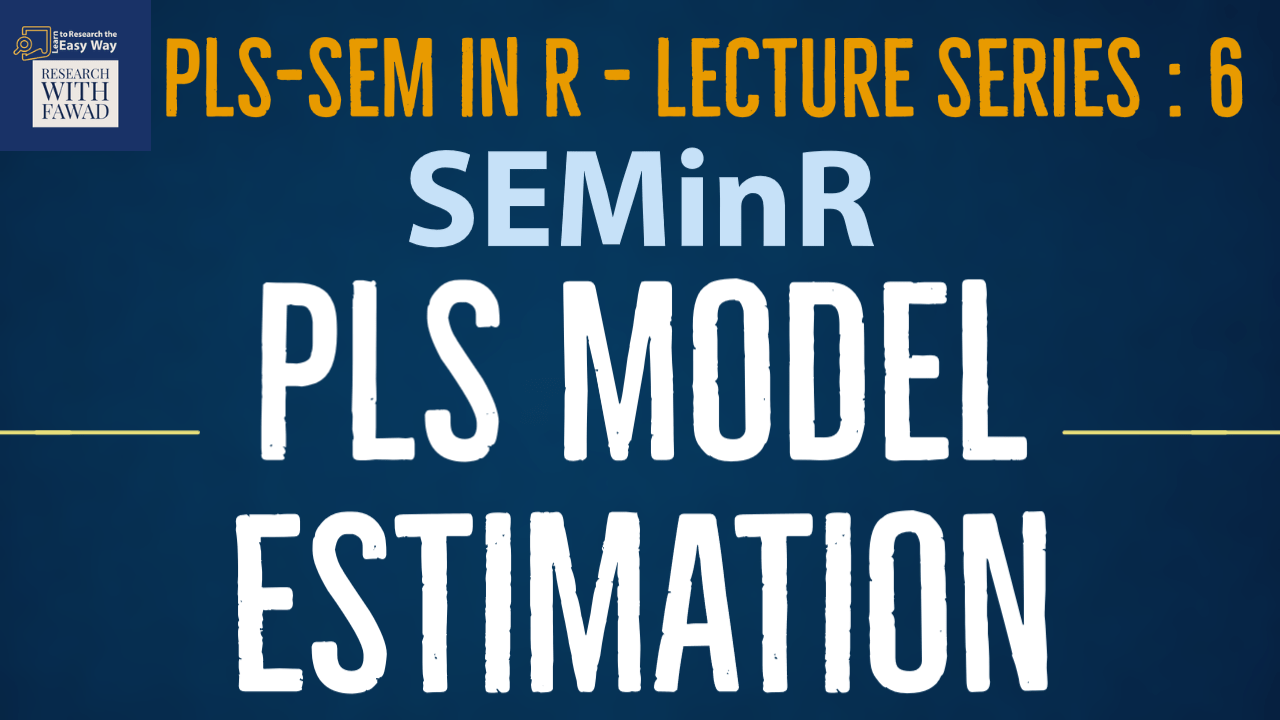
PLS Model Estimation in SEMinR
This tutorial on the SEMinR series will introduce how to estimate PLS moxel.

This tutorial on the SEMinR series will introduce how to estimate PLS moxel.
There are four steps to specify and estimate a structural equation model using SEMinR:
Step 4 in creating a model
This function applies the arguments shown in . Table. Please note that arguments with default values do not need to be specified but will revert to the default value when not specified.
We now estimate the PLS-SEM model by using the estimate_pls() function with arguments
data = datas,
measurement_model = simple_mm,
structural_model = simple_sm,
inner_weights = path_weighting,
missing = mean_replacement, and
missing_value = “-99”
and assign the output to simple_model.
It is like running PLS Algorithm in SmartPLS
Note that the arguments for inner_weights, missing, and missing_value can be omitted if the default arguments are used. This is equivalent to the previous code block:
Following is a brief review of the steps that have been discussed in SEMinR tutorials.
Hair Jr, J. F., Hult, G. T. M., Ringle, C. M., Sarstedt, M., Danks, N. P., & Ray, S. (2021). Partial Least Squares Structural Equation Modeling (PLS-SEM) Using R: A Workbook.
The tutorials on SEMinR are based on the mentioned book. The book is open source and available for download under this link.